|
Dec 11, Thur. Our one hour flight from Bangkok
to Chiang Mai took us to a higher altitude, cooler climate and our first look at
the hills of Thailand. Sam, our guide, met us at the airport with a full
itinerary for our day. Chiang Mai, known as the Rose of the North, has an
"Old City" inner core that is
surrounded by a moat and rock wall reminiscent of its prior leadership as the
capital of an independent kingdom (1292). We drove right into town and turned down a very narrow
bamboo-lined driveway to our accommodation (Tamarind Village) which was situated within walking distance of most everything
in the city including the famous
Night Market.
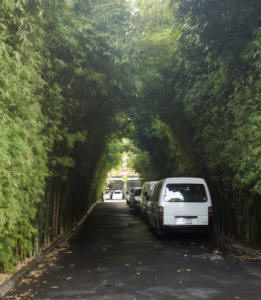 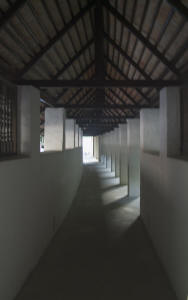
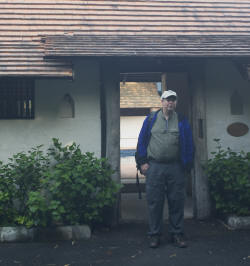 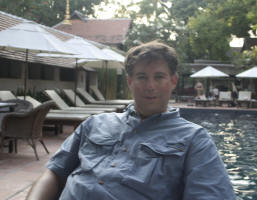
After checking in we headed toward the northwest part of town past the Chiang Mai
University campus and up Doi Suthep Mountain overlooking the city. Lunch was at
Galae a terraced outdoor restaurant overlooking a large trout pond.
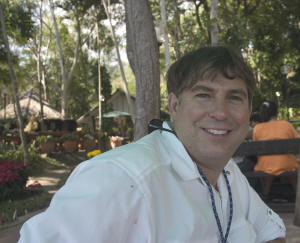 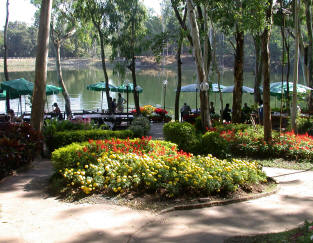
Further up the mountain is the Wat Phra That Doi Suthep. The story of the
temple originates with an elephant laden with religious relics being sent out
from Chiang Mai. The elephant stubbornly climbed the mountain, created a series
of circles which were given symbolic significance and came to rest on the top.
Honoring the site a temple was constructed, quite an engineering feat since
there was nothing but jungle until 1935 when the village communities volunteered
to construct a road to the existing temple.
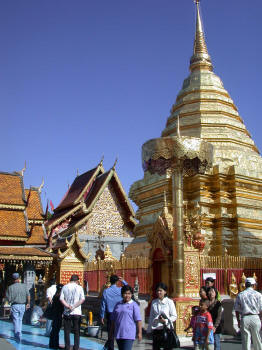 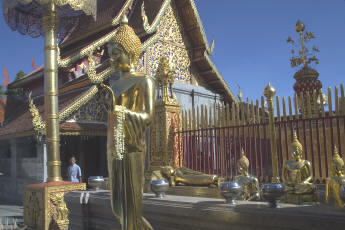
The Golden Chedi pictured above is the center of the temple compound. The
buildings represent the Lanna style of Thai design and craftsmanship including a
teak vihara (chapel, assembly hall). Four golden umbrellas stand at the
corners of the Chedi with the walls of the cloister surrounding the square
containing recesses of sculptures and decorated with murals of the life of the
Buddha. Below is an artisan working on restoration of one of the many
statutes by re-applying gold leaf.
 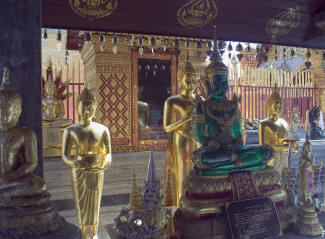
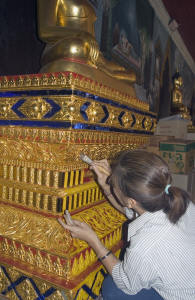 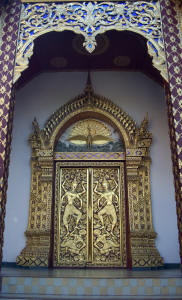
The Museum of the Temple below houses the sacred scriptures of the Temple.
The terrace affords a view of the valley overlooking Chiang Mai.
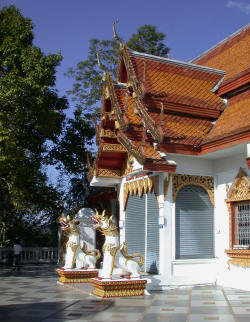 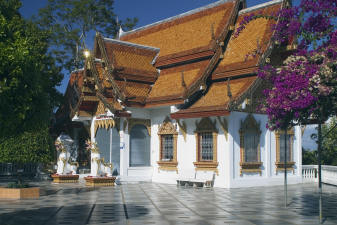
Visitors ring the bells along the temple terrace for good
luck. Access to the temple is either by a cable car or a 306 steep stairway
lined by the serpent naga symbolizing enlightenment. Demons and creatures guard
the temple complex.
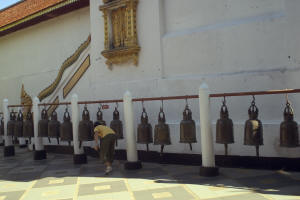 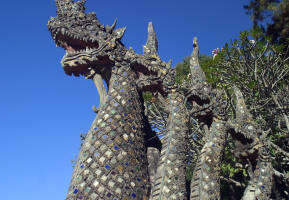
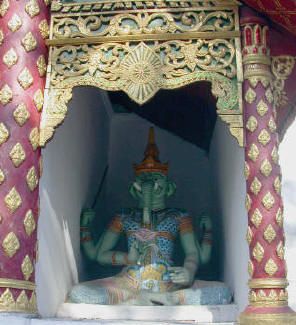 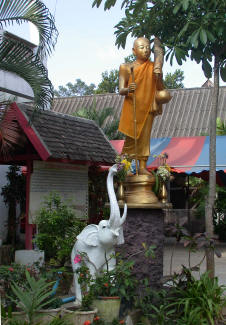
We had a brief stop at the Chiang Mai Tribal Museum. The displays focus on
crafts, costumes, farming tools, weapons, and musical instruments of the many
different local tribes of Thailand.
In the evening we went to a local dinner theater
serving northern Thai-style dishes and offering performances of traditional
music and dance as the umbrella, fire and peacock dances. The crowd's
favorite was the ox that prances around flapping its jaw for a hand-out of money.
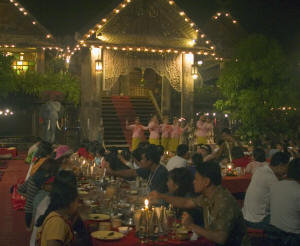 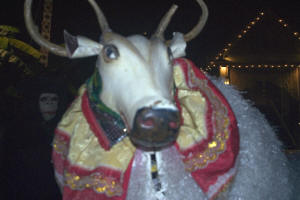
Dec. 12, Fri. We were picked up early for a bike ride in the
countryside. Pawn, our host, and the tour operator's wife outfitted us
with great bikes and plenty of snacks for our morning ride. We set off
down suburban roads along the Ping River and passed one of the Queen's royal
country homes. Turning off the main roads we entered a compound, McKean
Rehabilitation Center,
established in 1908 by a Christian missionary for the care and home of those
with leprosy. In cooperation, the Thai king donated the land, hospital, halls,
administration buildings and cottages for housing. Although treatable
today, many of the elderly people continue to reside on the grounds and earn
money from their craftsmanship.
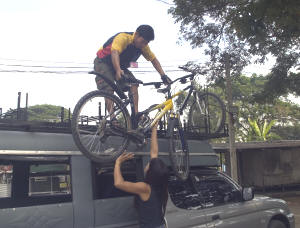
We stopped at a local temple that was just being completed. Much of the work is
done by hand including the dragon creatures lining the entry. Here we
spent time talking with the local monks and checking out the CAD drawings for
the new complex.
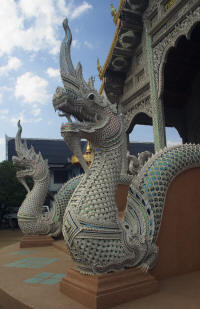 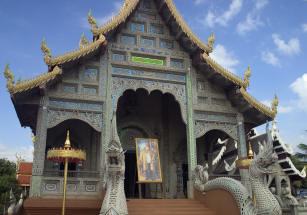
We rode through orchards of lunkan (lycee-like
fruit) and banana trees along side of vegetable gardens. The homes are built
above ground for coolness and to avoid flooding. Many families use the space
under their homes for their businesses. One such family makes a type of
rice and raison pudding steamed in bamboo sections. Once cooked the treat
can be transported "as is" anywhere until such time as the bamboo is peeled away
leaving a sweet rice treat ready for eating.
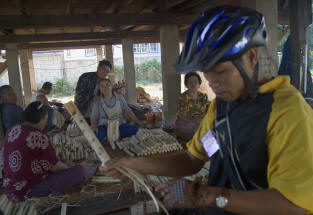 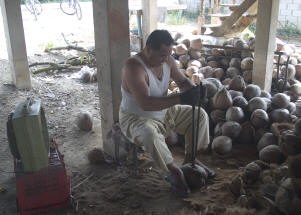
Along the way, we passed the Wat Chedi Liem, a temple built originally in 8C and
restored in the 19C. We also visited the Wian Kum Kam, the ancient
moated town built before the existing Chiang Mai. The extensive ruins have
just recently been excavated out of the thick groves which previously hid their
existence.
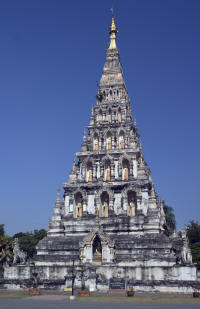
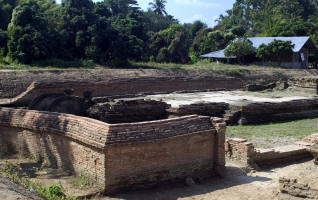 
Racks of pork skins were drying on lines along the road
and then put in banana leaves and steamed for eating. Another
family (below) grows and sells hot peppers. Although they looked like poblano chilies to us, they were definitely much hotter. We had them multiple
times in a type of Thai salsa that is a northern style condiment. They also
raise frogs and fighting cocks for other means of income. We ended
our ride at the Riverside restaurant where we relaxed along the river and
enjoyed pork red curry with hot peppers.
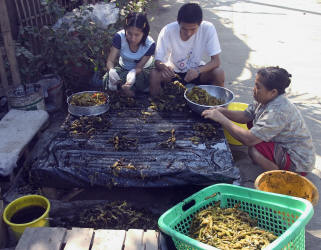 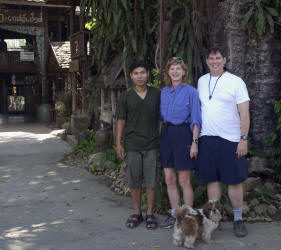
Our afternoon we spent walking around the town of Chiang
Mai, visiting the local temples (Wat Phra Sing Luang, Wat Chedi Luang), practicing our English on the young monks and
enjoying the mild warm afternoon. Dinner was at a house filled with antiques
from Thailand. We grabbed a tuk tuk back to the Night Market and spent several
hours wandering among the stalls before heading back to the inn.
Dec 13, Sat. This morning we departed
on a two hour
drive to the Doi Inthanon National Park. Prior to driving up the mountain, we
visited one of the few remaining hillside tribes (Karen) allowed to remain
living in the reserve. Most have been removed from the Ping water basin in order
to reduce erosion and deforestation (poppy growing). A royal project has
introduced the tribesmen to terraced cultivation of marigolds, strawberries,
asparagus, broccoli and rice. The women are encouraged to weave articles for
sale to tourists. The houses are made of thatched leaves and wood.
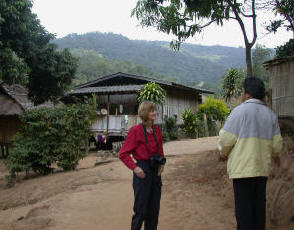 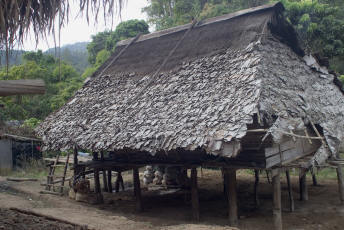
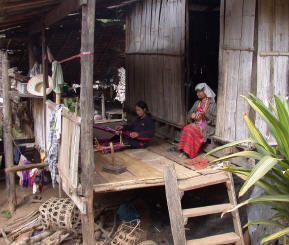 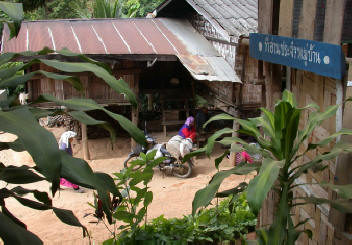
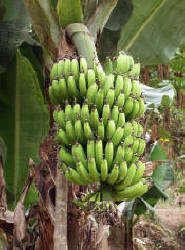 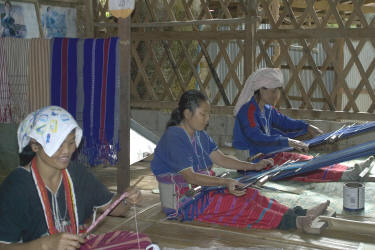
The Karen young girls are shy but they show us how they play checkers with
bottle caps as markers.
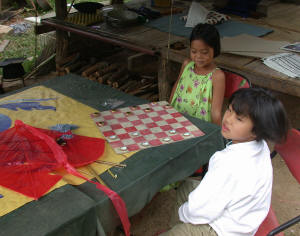 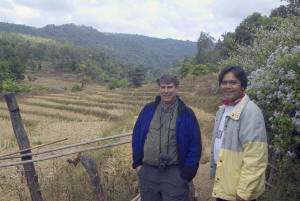
Thailand's highest mountain (8,464 ft) presides over the park. We are told that
there are great views of the valley from this vantage point; however, most of
the time the top is coated in mist which was the case when we were there.
A radar station built by the US and now maintained by the Thai Navy.
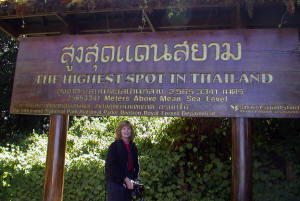
The remains of Chiang Mai's last ruler are contained in the stupa (below), a
project initiated by his favorite consort. This is a popular pilgrimage spot.
The reserve is covered in hiking trails lined with thick pine forests, oaks, and
red and white rhododendron.
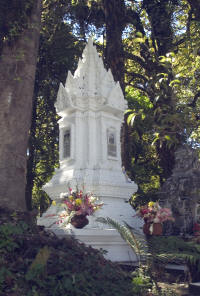 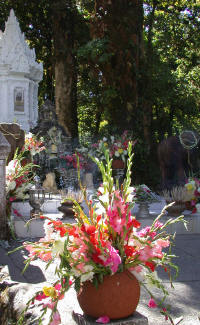
We drove down the mountain to the Royal Chedis which were build recently by the
Royal Air Force for the King and Queen.
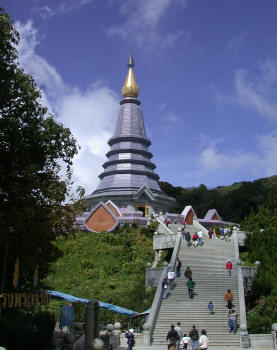 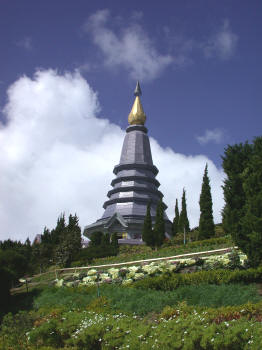
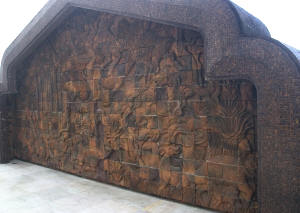
We stopped for lunch at a roadside cafe serving roasted
chicken, a delicacy enjoyed by the patrons as well as all the dogs. After lunch
we visited a Hmong tribe village, another Royal project site. The housing
ranging from flimsy lean-tos to more substantial block buildings built with
poppy money from the past. Story has it that the Hmong saved money in
bamboo sections and when a certain number of sections were filled then a person
was able to pay cash for a house, car, animals, etc.
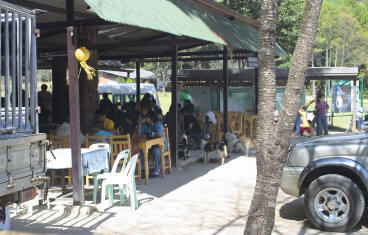 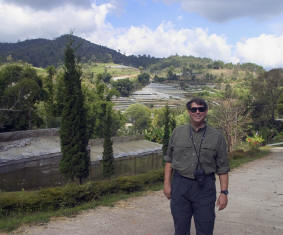
A number of waterfalls are located in the park. We
took advantage of this cool spot for a short rest and picture.
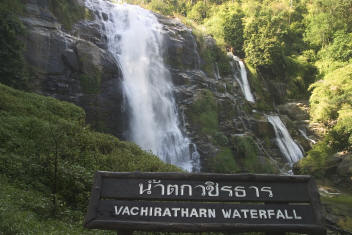
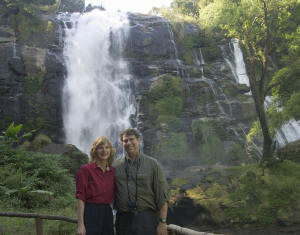
On our return trip, we visited the PA-DA Cotton Textile Museum. Its founder
specialized in dying cotton naturally and weaving delicate cotton cloths.
Our final stop of the day was the Wat Phra That Si Chom Thong, a 15C style Lanna
architecture temple with elaborate northern gables. The alter area has
elephant tusks in front of a wooden gilded statutes of Buddha.
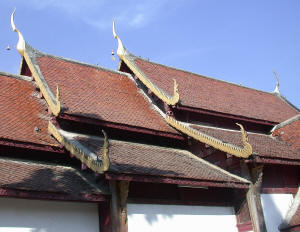 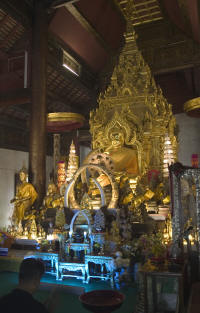
We completed our visit to Chiang Mai at the same restaurant in which we launched
our stay, Galae.
From Chiang Mai we flew to
Phuket and Koh Yao Island
|